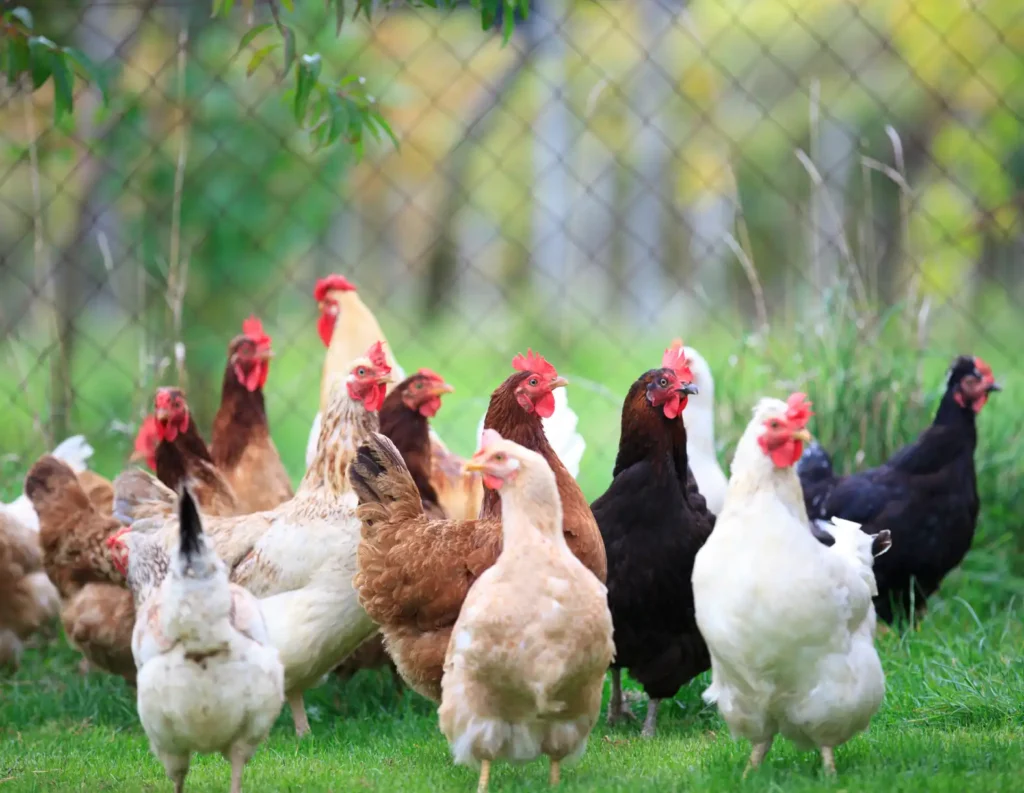Coccidiosis is a common and seriously harmful parasitic disease in livestock and poultry farming. It not only leads to slow growth and low feed conversion rates in livestock and poultry but can also cause massive mortality in severe cases, resulting in significant economic losses to the farming industry. To effectively prevent and control coccidiosis, farmers often adopt drug prevention and treatment methods. Among them, diclazuril, as a highly effective, low-toxic, and cost-effective broad-spectrum anticoccidial drug, has received widespread attention.

I. Properties and Pharmacological Action of Diclazuril
Diclazuril, chemically named 2,6-dichloro-α-(4-chlorophenyl)-4-(4,5-dihydro-3,5-dioxo-1,2,4-triazin-2(3H)-yl)benzeneacetonitrile, has a molecular formula of C17H9Cl3N4O2 and a molecular weight of 407.638. It is an off-white or light yellow powder, almost odorless. It is slightly soluble in dimethylformamide, sparingly soluble in tetrahydrofuran, and practically insoluble in water and ethanol. Furthermore, diclazuril exhibits certain thermal and chemical stability, providing a good basis for its use as a standard substance.

Diclazuril is a triazine broad-spectrum anticoccidial drug that mainly inhibits the proliferation of sporozoites and schizonts. It has a significant coccidiocidal effect during the first two days of the coccidial life cycle, namely the sporozoite and first-generation schizont stages. It shows good efficacy against various Eimeria species in chickens, such as E. tenella, E. acervulina, E. necatrix, E. brunetti, and E. maxima, as well as coccidia in ducks and rabbits.
When diclazuril is mixed into chicken feed, a small portion is absorbed by the digestive tract. However, due to the small dosage, the total amount absorbed is very low, resulting in low drug residue levels in tissues. When fed at a dose of 1 mg/kg, the average residue level measured in chicken tissues on the 7th day after the last administration was below 0.063 mg/kg.
II. Precautions for the Use of Diclazuril
- Prohibited during the laying period of laying hens: Diclazuril may have adverse effects on egg production in laying hens, so its use is prohibited during this period.
- Short effective period: Diclazuril has a relatively short effective period. Its anticoccidial effect is significantly weakened one day after withdrawal, and the effect is basically gone after two days. Therefore, continuous medication is necessary to prevent the recurrence of coccidiosis.
- Extremely low mixing concentration: The mixing concentration of diclazuril in feed is extremely low, and the feed should be thoroughly mixed; otherwise, the efficacy may be affected.
- Drug resistance issues: Diclazuril is highly prone to drug resistance. It is recommended to rotate medications every 6 months, and guanchloral and Baiyun Chicken Coccidiosis Powder can be used for preventive rotation.
III. Applications of Diclazuril
Due to its high efficacy, low toxicity, and cost-effectiveness, diclazuril has been widely used in the livestock and poultry farming industry. For the prevention and control of chicken coccidiosis, continuous long-term addition of diclazuril for prevention is the most effective and economical method. The cost of using diclazuril for the entire rearing period of a broiler chicken for prevention is less than 5 cents, making it very economical. In addition, diclazuril can also be used for the prevention and control of coccidiosis in ducks, rabbits, and other livestock and poultry.
Regarding the application of diclazuril standard substances, Manhage has been deeply involved in the field of standard substances for 24 years, consistently adhering to underlying technological innovation, and is committed to becoming a leading isotope brand in clinical mass spectrometry and biomedicine. The company can accurately configure raw material ratios and carry out precise and personalized preparation according to the key application needs of related fields, and can also provide customers with technical services for solutions.
The types of Manhage’s diclazuril standard substances can be referred to as follows:
| Product Code | Product Name | CAS No. | Specification | Packaging | Inventory | Lead Time | Expiration Date |
| BePure-21979-100mg | Reference Material: Diclazuril | 101831-37-2 | 99.8% | 100mg | In Stock | – | 2026-02-18 |
| BePure-21979YZ | Reference Material: Diclazuril, N,N-Dimethylformamide = 1:1 | 101831-37-2 | 999.9 μg/mL | 1mL | In Stock | – | 2025-07-05 |
| BePure-21979 | Reference Material: Diclazuril | 101831-37-2 | Certificate | 10mg | 4-6 Weeks | – | – |
| BePure-21980 | Reference Material: Diclazuril | 103337-71-9 | Certificate | 10mg | Other | – | – |
| BePure-30701XM | Reference Material: Diclazuril (in 5% DMSO), Applicable to: Determination of Diclazuril Residues in Poultry and Eggs according to SN/T 2316-2009/SN/T 2318-2009 | – | 100 μg/mL | 1mL | 2 Weeks | – | – |
Diclazuril, as a standard substance for a broad-spectrum anticoccidial drug, has important application value in the livestock and poultry farming industry. Its high efficacy, low toxicity, and cost-effectiveness make it one of the important drugs for preventing and controlling coccidiosis. However, attention should also be paid to its usage precautions and drug resistance issues during use to ensure that it can play its role safely and effectively. In the future, with the continuous advancement of science and technology and the continuous development of the livestock and poultry farming industry, the application prospects of diclazuril will be even broader.

